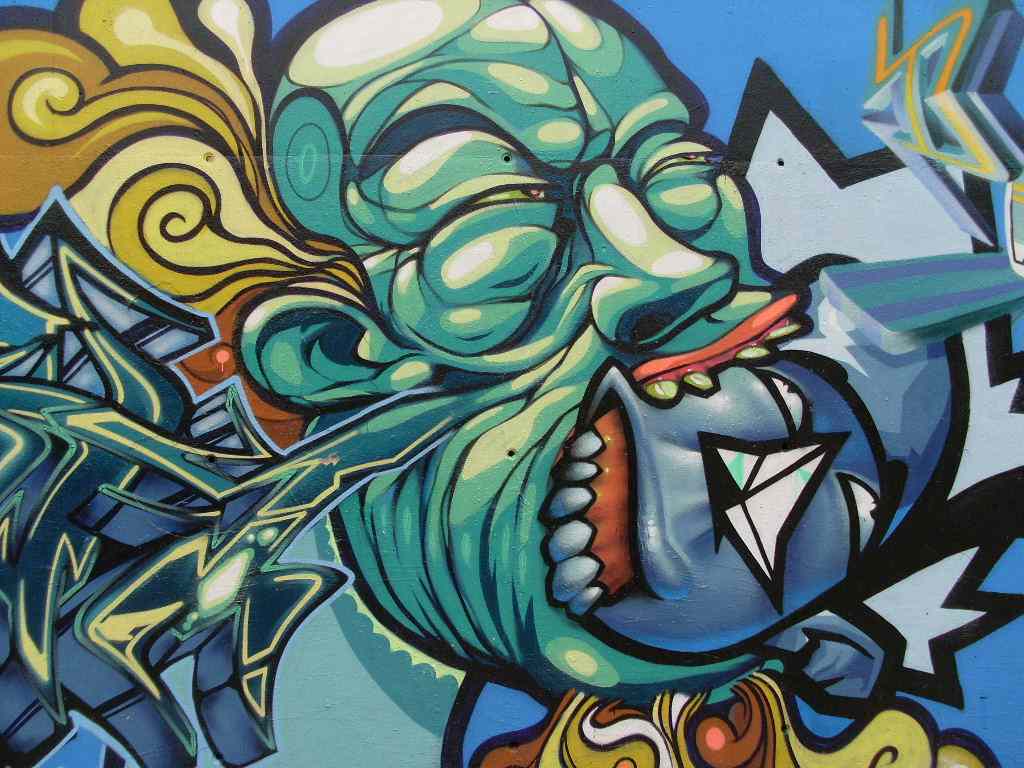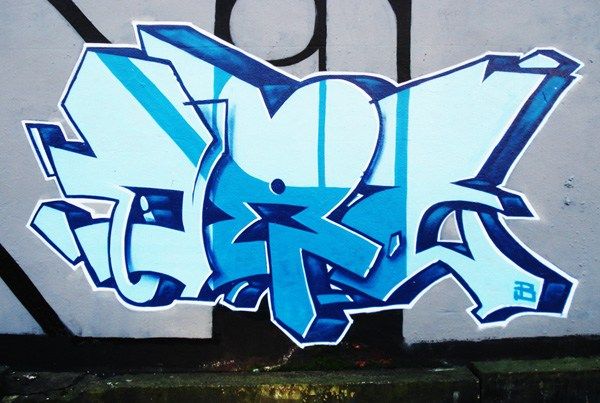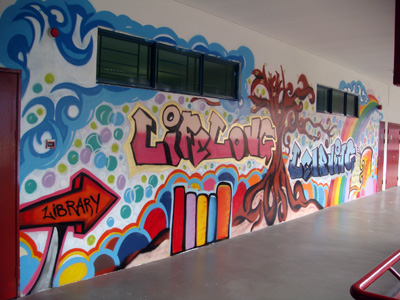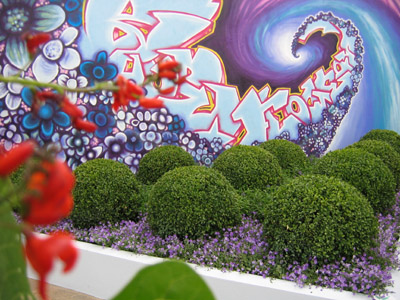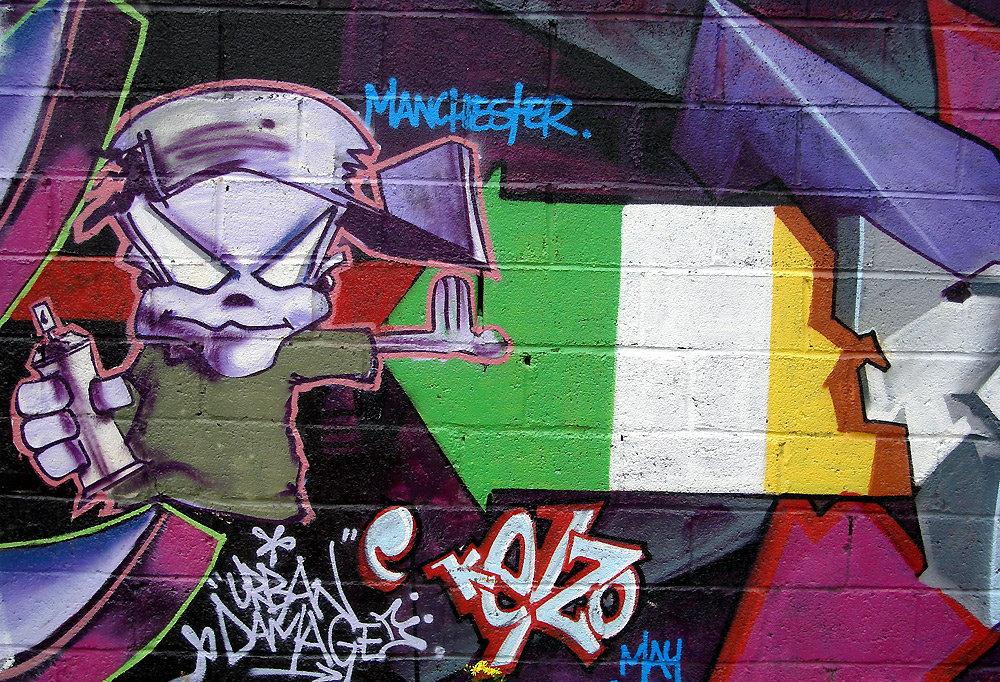
Henri de Toulouse-Lautrec (1864-1901) was born as the son of an aristocratic and rich family in the South of France. From early childhood he developed a passion for drawing and painting and received painting and drawing lessons by a professional artist, Rene Princeteau. He went to Paris in 1882 to study painting, where he met �mile Bernard and Vincent van Gogh . He became attracted to the Impressionist style and joined the movement. Lautrec became a part of the bohemian community of Montmartre with its nightlife of cabarets, cafes, restaurants, sleazy dance halls and brothels. Lautrec, was deeply influenced by Japanese woodblock printing. From the 1850s onwards, Japanese art work flowed into the west and attracted the attention of both artists and collectors. The term "japonisme" was coined in 1872 by Philippe Burty, a French art critic.
Lautrec lived during the height of what have been called 'La Belle �poque' of Paris. Although his handicap and his alcohol abuse kept him from enjoying some of life's pleasures. He applied Cheret's style to depict the nightlife of Montmartre. Although Lautrec was not the only poster artist that used Montmartre as a backdrop to his work, as some of Cheret's pupils, such as Georges Meunier in his poster L'Elysee Montmartre (1895), and Lucien Lefevre in Electricine (1895) have already done so, his however revolutionized Cheret's style in that they were social commentaries of his era. His posters were bold, and his aesthetics avant-garde with a radically flattened space, satirical characters with virtually no graduated shading, Japanese-inspired simplifications, clear silhouettes, and stark colors.
The ideal, elegant, and joyful women of Jules Ch�ret were replaced in Lautrec's posters by prostitutes and madams who accepted him as a fellow outcast, and permitted him to wander about, sketching and painting freely on his own initiative or on commission to the brothels. He grew close to his prostitute models; he played games with them, brought them presents, and accompanied them to his studio, restaurants, circuses, or theaters during their time off. He neither vilified nor glamorized these women, but presented an objective, almost documentary view of the everyday life they shared with him. According to Andr� Mellerio: Lautrec
smells a vague stench of moral corruption and captures its effect without naming it, and does it without seeming to place the blame. One almost gets the feeling he experiences a kind of bitter pleasure from soaking up this aroma ... If M. de Toulouse-Lautrec�s art is not uplifting in terms of virtue overcoming vice, at least he has analyzed vice with a highly unusual degree of perceptiveness.
Lautrec gradually reduced the role of text in his posters. His last poster has all the necessary information captured by the name of the dancer; Jane Avril (1893).

Theophile Alexandre Steinlen or 'Theophile Steinlen' (1859-1923) was born in Switzerland, where he studied art at Lausanne and later became active as a textile designer in Mulhause. Mainly self-taught, he arrived in Paris at the age of twenty three in 1882. He quickly established himself as a leading illustrator of popular journals such as Le Rire, Mirliton, Assiette au Beurre, Chat Noir, and Gil Blas, for which he produced over four hundred lithographs. As an artist he was not merely a commercial success but showed great sensitivity toward social issues. Besides illustrating advertisements for a variety of products, Steinlen was famous for his posters of cabaret and music hall performers. He also contributed a large amount of drawings and lithographs to the radical press publications, Pere Peinard, Les Temps Nouveaux and La Chambard. In order to avoid political repercussions for some of his art dealing with strong social content he often employed pseudonyms such as, 'Treelan' and 'Pierre'. Steinlen's contributions to the Socialist journal, La Chambard, were particularly influential. He was a regular artist for this publisher during the years of 1893 and 1894.
Steinlen's lithographs were reproduced upon thin newsprint in the journal by photography and typography with added captions. Steinlen's images were critica of social contrasts, which he depicted with a sure handed simplicity, fine imagery and stylistic elegance. Theophile Steinlen's wonderful use of line and design led to some of the most famous posters of his era. These include, Tournee du Chat Noir (1896), La Rue (1896) and Lait pur Sterilise (1894). Yet the majority of his great art continued to explore the living struggles of the working class . Known as "the Millet of the Streets", Theophile Steinlen's influence was vast. Among other artists both Toulouse-Lautrec and the young Picasso paid direct homage to his art.
Some of Theophile Steinlen's most famous lithographs from Le Chambard were published in limited editions of one hundred impressions on high quality paper by Kleinmann in Paris. From 1893 to 1895 this publisher also commissioned lithographic art from Toulouse-Lautrec, Cheret, Forain, Grasset, Vallatton and others. Most of the original lithographs published by Kleinmann bear his blindstamp and publication number in red pencil in the extreme lower left margin. In total, Theophile Alexandre Steinlen created 382 original lithographs and 115 etchings.


Leonetto Cappiello (1875-1942) was born in Livorno, Italy. He had no formal training. In 1898, he decided to visit Paris, and immediately fell in love with the city and decided to stay. He did two sketch caricatures of his compatriots, the actor Novelli and the composer Puccini and submitted them to "Le Rire," a popular humour magazine. They wre accepted, and he became an overnight sensation. His career for "Le Rire," earned him resulted in his first poster commission and by in 1900 his posters were in high demand. He was influenced by Cheret, but anticipating a more modern approach to poster design, his work incorporated a sophisticated simplification which abstracted from unnecessary details, and concentrating on a dynamic composition.
In fact, his was the first posters that recorded the quickening pace of life in the streets as the new era of automobiles took hold. He is called "The Father of modern advertising," and his posters exhibited a profound understanding of the subtle communication techniques. For instance his famous 1894 design for Absinthe Parisienne by P. G�lis-Didot and Louis Malteste depicts a coyish erotic message, subtilely suggesting in its text "Bois donc, tu verras apr�s..." (Drink - then you'll see...) .An overly self-assured male character, based on Moli�re's comic doctor Diafoirus, is enticing an apparently chaste redhead, whose body language projects a pretense to innocence.
Cappiello's portraits and posters were mischievous, cheerful and uncommon. His compositions were strong, harmonious and balanced. Because of his minimalism approach, Cappiello was able to produce nearly 1000 posters in his time.

Go to the next chapter; Chapter 29 -- Propaganda Posters
References
- Ackroyd, Christopher. Toulouse-Lautrec. Chartwell Books, 1989
- Toulouse-Lautrec: the Baldwin M. Baldwin Collection, San Diego Museum of Art. San Diego Museum of Art, 1988, ISBN13: 9780937108079.
- Andr� Mellerio, Le Mouvement Id�aliste en peinture (Paris: Floury, 1896), 35�36, trans. in Murray, Retrospective, 248�49, at 249.
- D'esparbes, Georges et al. Les Demi-cabots, le caf� concert, le cirque, les forains. Paris, 1896.
- Iskin, Ruth E., Identity and Interpretation: Receptions of Toulouse-Lautrec�s Reine de joie Poster in the 1890s, Nineteenth-Century Art Worldwide , Volume 8, Issue 1, Spring 2009
- Feinblatt, Ebria & Bruce Davis. Toulouse-Lautrec and his contemporaries: posters of the belle �poque from the Wagner Collection. Los Angeles County Museum of Art, 1985.
- Gauzi , Fran�oise. Lautrec et son temps. Paris, 1954.
- Schimmel, Herbert D. & Phillip Dennis Cate. The Henri de Toulouse-Lautrec and W. H. B. Sands correspondence. New York, 1983.
- Stuckey, Charles F. Toulouse-Lautrec paintings. Art Institute of Chicago, 1979.
- Sugana, G.M. The complete paintings of Toulouse-Lautrec. New York, 1969.
- Adhemar, Jean. Toulouse-Lautrec: his complete lithographs and drypoints. New York, 1965.
- Adriani, G�tz. Toulouse-Lautrec. London, 1987. Trans. Sebastian Wormell; first published Cologne, 1986. Adriani, G�tz. Toulouse-Lautrec: the complete graphic works; a catalogue raisonn�, the Gerstenberg collection. Royal Academy of Arts, London, 1988.
- Castleman, Riva & Wolfgang Wittrock. Henri de Toulouse-Lautrec, images of the 1890s. Museum of Modern Art, New York, 1985.
- Cate, Phillip Dennis & Patricia Eckert Boyer. The Circle of Toulouse-Lautrec. The Jane Voorhees Zimmerli Art Museum, Rutgers, 1985.
- Cooper, Douglas. Henri de Toulouse-Lautrec. New York, 1966.
- Hayward Gallery. Toulouse-Lautrec. New Haven, 1991. Catalogue for an exhibition held at the Hayward Gallery, London, October 10, 1991 through January 19, 1992, and at the Galeries Nationales du Grand Palais, Paris, February 21 through June 1, 1992.
- Huisman, Philippe & M.G. Dortu. Lautrec by Lautrec. New York, 1968. Trans. Corinne Bellow; first published in France, 1964.
- Weisberg, Gabriel P. et al. Japonisme: the Japanese influence on French art, 1854-1910. Cleveland Museum of Art, 1975.
- Ralph E. Shikes, The Indignant Eye: The Artist as Social Critic, Boston, Beacon Press, 1969,
- Ernest de Crauzat, L'Oeuvre Grave et Lithographie de Steinlen, Paris, Societe de Propagation des Livres d'Art, 1913 (Reprint, 1983).
- Rennert, Jack. Cappiello, the posters of Leonetto Cappiello,Poster Auctions Intl Inc, ISBN 0-9664202-7-6
------------------------------------------------------------------------------------

This work is licensed under a Creative Commons Attribution-No Derivative Works 3.0 Unported License.

This work is licensed under a Creative Commons Attribution-No Derivative Works 3.0 Unported License.


















